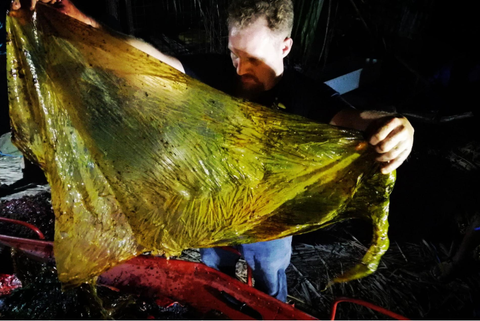Your Cart is Empty
In the 1970s, the discovery of PET (the plastic used in bottles) revolutionised the retail industry. This plastic was hailed as a miracle due to its light-weight, cheap and durable properties which make it attractive for mass production and distribution. PET bottles quickly became ubiquitous around the world, replacing glass bottles in the beverage industry and enticing the “bottled water boom” which followed. Plastic manufacturing rapidly accelerated, outpacing nearly every other man-made material ever created. As of 2017, over 1 million plastic bottles were sold every minute.
However, unlike other man-made products such as steel, which is mainly used in construction and therefore has a long life span, PET bottles are mainly single-use. Despite being 100% recyclable this is rarely the case, with a large proportion of them being chucked straight into regular bins or littered within minutes of use. According to scientists, 91% of plastic is not recycled. Of the 8.3 billion metric tons of plastic produced by humans (as of 2015), 6.3 billion tons have already become waste… with 79% percent accumulating in landfills in the natural environment.
Plastic bottles and bottle caps are now ranked the 3rd and 4th most common plastic waste items collected during Ocean Conservancy’s annual beach clean-ups and therefore make up a massive portion of the plastic waste wreaking havoc in our oceans. According to scientists about 8 million metric tons of plastic waste enters our ocean every year (That’s a truckload every minute) and this figure was expected to increase 10 fold by 2020.
"By 2050 there will be more plastic (by weight) than fishes in our oceans."
This plastic debris accumulates in rotating ocean currents around the world, forming 5 massive ‘garbage patches’ in the middle of our oceans. To put their sheer size into perspective, the Great Pacific garbage patch is twice the size of France. This is just one of FIVE.
The disastrous environmental impact on marine life.
Many marine organisms can’t distinguish between plastic items and real food. Around the Great Pacific garbage patch, where there is actually more plastics than natural prey at the ocean surface so plastic often forms a major component of their diet. This is very dangerous as animals can’t digest plastics so when it is consumed, it merely accumulates in their stomach, preventing them from eating real food and thus leading to starvation. This has been the case for many whales which have washed up on our shores in recent years. For example, a young whale that washed up in the Philippines was found to have almost 40kg of plastic waste in its stomach. Annually, around 100,000 marine mammals and turtles and 1 million sea birds are killed by marine plastic pollution.

In addition to this, plastic does not decompose in the marine environment. A single plastic bottle can last over 450 years, slowly fragmenting into tiny particles known as microplastics, but never ceasing to exist. This micro-plastics can then easily be ingested by plankton, traveling up the food chain and eventually ending up on our plates. It is estimated that approximately 1 in 3 fish caught for human consumption contains some plastic.
Please consider the impact your plastic consumption is having on the environment and consider glass packaging as an alternative.
